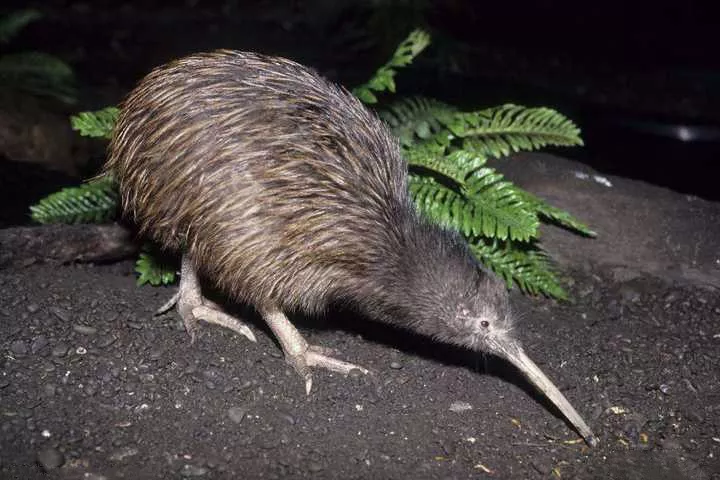Kiwi is one of the most iconic and beloved symbols of New Zealand. The kiwi bird is not only the New Zealand’s national bird but also its unofficial emblem, representing the unique wildlife and culture of this remote island nation. However, despite its widespread popularity, there are still many people who wonder: is Kiwi a bird?
The short answer is yes, the kiwi is definitely a bird. However, the kiwi is not your typical bird. Unlike most birds, the kiwi is flightless and has a unique set of physical and behavioral characteristics that distinguish it from other avian species.
Physical Characteristics of the Kiwi Bird
One of the most distinctive features of the kiwi is its appearance. With its furry brown plumage, long beak, and small, beady eyes, the kiwi looks more like a mammal than a bird. However, despite its unusual appearance, the kiwi is definitely a bird. It has vestigial wings that are not functional for flight, but aid in balance and maneuverability in its terrestrial habitat.
The kiwi belongs to a group of birds known as ratites, which includes other flightless birds such as the ostrich, emu, and cassowary. Like these other birds, the kiwi has a flat breastbone rather than a keeled one, which means that it lacks the muscle necessary for sustained flight.
Behavioral Characteristics of the Kiwi Bird
In addition to its physical characteristics, the kiwi also has a unique set of behaviors that distinguish it from other birds. For example, the kiwi is primarily nocturnal, meaning that it is most active at night. This behavior helps the kiwi to avoid predators such as cats and stoats, which are more active during the day.
Another interesting behavior of the kiwi is its reliance on its sense of smell. Unlike most birds, which have a poor sense of smell, the kiwi has a highly developed olfactory system that it uses to locate its prey. Kiwis are omnivorous, with a diet consisting mainly of invertebrates, such as worms, insects, and spiders, as well as fruits and seeds. Their long beaks allow them to probe the soil and leaf litter to extract their prey. They have an acute sense of smell, which aids in locating their food in the dark forest environment.
Kiwi breeding behaviors are also distinctive. They are monogamous, forming long-term pair bonds. The female lays large eggs, typically representing a substantial portion of her body weight. Interestingly, it is the male kiwi that assumes the responsibility of incubating the egg, with some species exhibiting remarkable commitment by incubating the egg for up to 80 days.
Conservation Status of the Kiwi Bird
Despite its popularity and iconic status, the kiwi is facing significant threats to its survival. One of the biggest threats to the kiwi is habitat loss, as the deforestation and development of New Zealand’s natural landscapes have destroyed much of the kiwi’s native habitat. Additionally, introduced predators such as rats, stoats, and possums are major threats to kiwi populations.
To combat these threats, a number of conservation organizations and initiatives have been established to protect the kiwi and other native wildlife of New Zealand. These efforts include predator control programs, habitat restoration projects, and captive breeding programs to boost the wild population.
Conclusion
In conclusion, the kiwi is definitely a bird, although it has a unique set of physical and behavioral characteristics that distinguish it from other avian species. Despite its unusual appearance and behaviors, the kiwi is one of the most beloved symbols of New Zealand, representing the country’s rich natural heritage and unique cultural identity. However, the kiwi is also facing significant threats to its survival, and it is up to all of us to work together to protect this iconic bird and its habitat for future generations to enjoy.


 Facebook
Facebook  Instagram
Instagram  Youtube
Youtube 